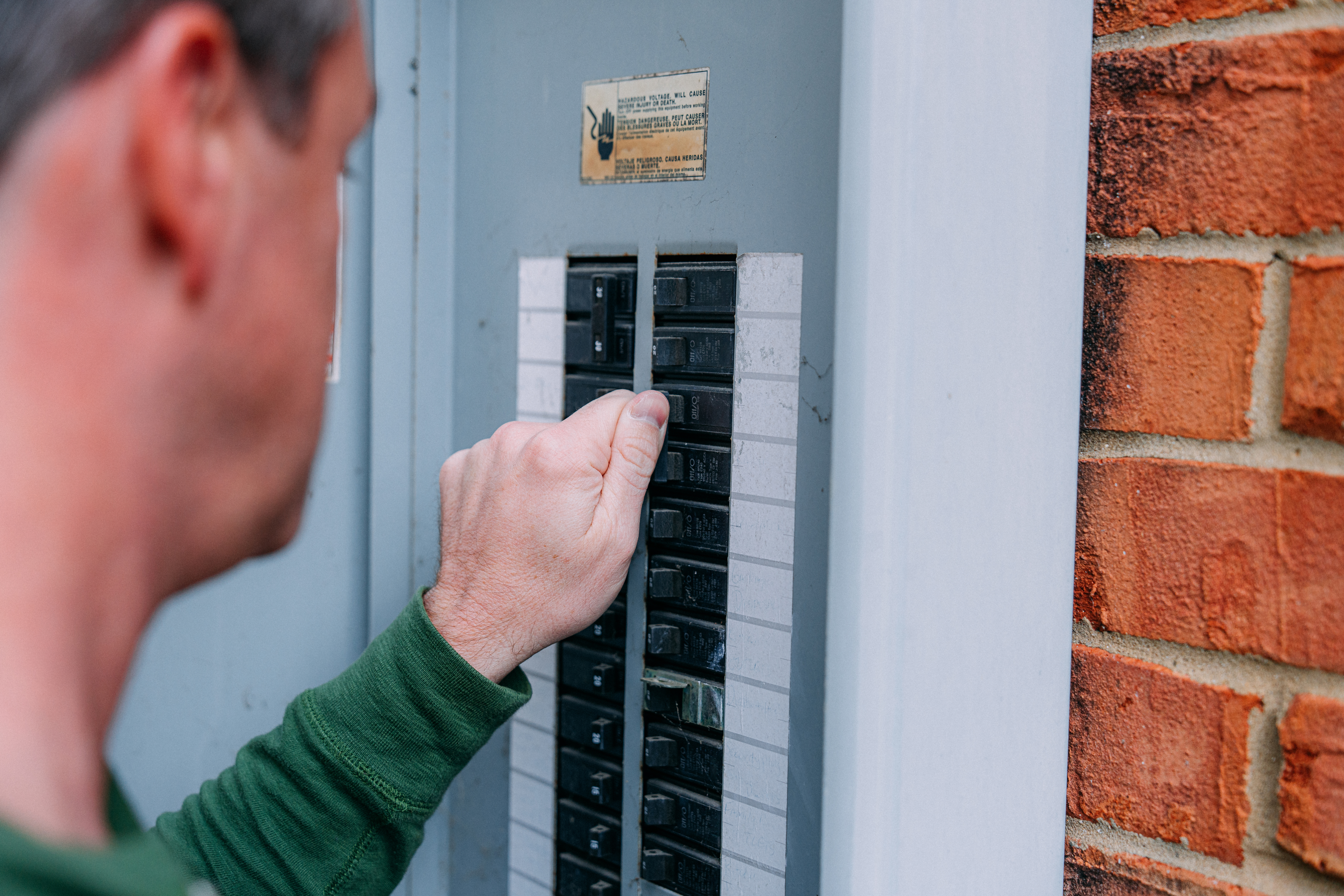
How much does electrical box replacement cost in Columbus, Ohio? Learn why this city may be more affordable and what factors the price.
Make your home smart thermostat compatible


Learning how to install a C-wire may be necessary when changing your thermostat from an old style to a new, smart model. However, depending on your home's layout and its HVAC system, the project can be a bit trickier than it sounds. Discover how to get a C-wire between your home's furnace and new thermostat in a few steps and learn what to do when that proves impossible.
A C-wire, or common wire, is a power wire that delivers electricity to your thermostat and connects directly to the HVAC system. Smart thermostats require a C-wire or an equivalent alternative to provide constant 24V power for a couple of reasons.
First, smart thermostats operate using a circuit board instead of the old mechanical switches found in older thermostats that didn't require an electrical connection other than delivery wires to the furnace. Second, smart thermostats typically connect to Wi-Fi and need constant power to maintain the connection.
Before committing to a C-wire installation project, check if your home already has one. Newer construction homes usually contain upgraded thermostat wiring ready for smart thermostat installation. Remove your thermostat from the wall and look for a blue or black wire disconnected or plugged into the C terminal. You can also check your furnace's electrical connection panel for the wire in the same configuration.

Installing a C-wire means connecting your thermostat to a power source. While running a new wire from the furnace's 24V power is the most effective and reliable method, other solutions exist.
The best way to connect your new smart thermostat to your furnace is with an added C-wire. However, this is also the most difficult method and requires pulling wires through walls physically. You can run a new thermostat cable consisting of one more wire than your current thermostat operates on, or you can install a single 18-gauge thermostat wire alongside the existing wiring.
In either case, use a fish tape and a drill, if necessary, to run the wire from the furnace through the floors and walls and to the thermostat location. Connect the new C-wire to the connections in each location labeled C.
Adapters that convert your existing furnace wiring into wires with similar C-wire functionality are available. The adapter installs into your furnace and its wiring to deliver power to the thermostat. Wiring the adapter is straightforward using the directions from your specific model. However, only some smart thermostats work with an adapter wiring configuration.
A simple method of powering your smart thermostat involves plugging a special 24V transformer into a nearby outlet and running the wire to the thermostat. You can run the wire inside the wall to the back of the thermostat or through a surface-mounted conduit and connect it to the C terminal. While simple and effective, this solution requires a nearby electrical outlet and visible wiring.
In some cases, you can avoid running new wires or adding adapters altogether by altering the wiring in the furnace and using the fan control wire as a C-wire. However, using this method means you'll give up control of your HVAC fan-only function, except when it’s in auto mode.
Depending on the functions of your HVAC system and its wiring, disconnect the fan-on wire and connect it to the C terminals on the furnace and thermostat. Add a jumper wire between the fan-on terminal and the cooling call terminal on systems with central air conditioning.
Installing a C-wire or using other methods to power your new smart thermostat requires low-voltage electrical wiring skills. Additionally, unlike other house wiring, thermostat wiring doesn't have wire-coloring standards.
The best tips when working with thermostat wiring are to take several pictures before disconnecting any wires and label each wire with a piece of tape indicating its purpose and connection terminal. Refer to your photos when reconnecting or installing a new thermostat.
Each terminal letter represents its function within the HVAC system and doesn't depend on the color of the wires.
C Common or C-wire
G Fan On
R 24VAC
Rh 24VAC for heat
Rc 24VAC for central air conditioning
W Heat call
Y Cooling call
Hiring a local electrician to install a new thermostat can avoid confusion and ensure warranties remain intact. However, installing a C-wire as a DIY project is doable with patience and careful attention to detail. Remember that incorrect wiring can harm your thermostat, HVAC system, or both. Most homeowners decide hiring a nearby electrician is worth the C-wire installation cost to ensure everything works right on the first try. Keep in mind that the typical cost to install a C-wire is $120 to $200.
From average costs to expert advice, get all the answers you need to get your job done.

How much does electrical box replacement cost in Columbus, Ohio? Learn why this city may be more affordable and what factors the price.

How much does adding an electrical outlet cost in Columbus? Get details on average pricing, permit needs, and what affects the total cost.

How much does rewire house cost in Columbus? Learn the major factors that impact the price and how it can help increase your home's value.

Adding an outlet to your home can be as straightforward as connecting to an existing circuit. Learn how to wire an outlet from another outlet in this advanced-level DIY guide.

The electrical panel delivers all your electricity needs, but it might ruin your aesthetic. Here are the electrical panel location rules so you can choose the best spot.

Installing a USB outlet can enhance your charging situation at home. From what a USB Outlet is to the cost of installation, we’ve rounded up what you need to know before installing an outlet in your home.